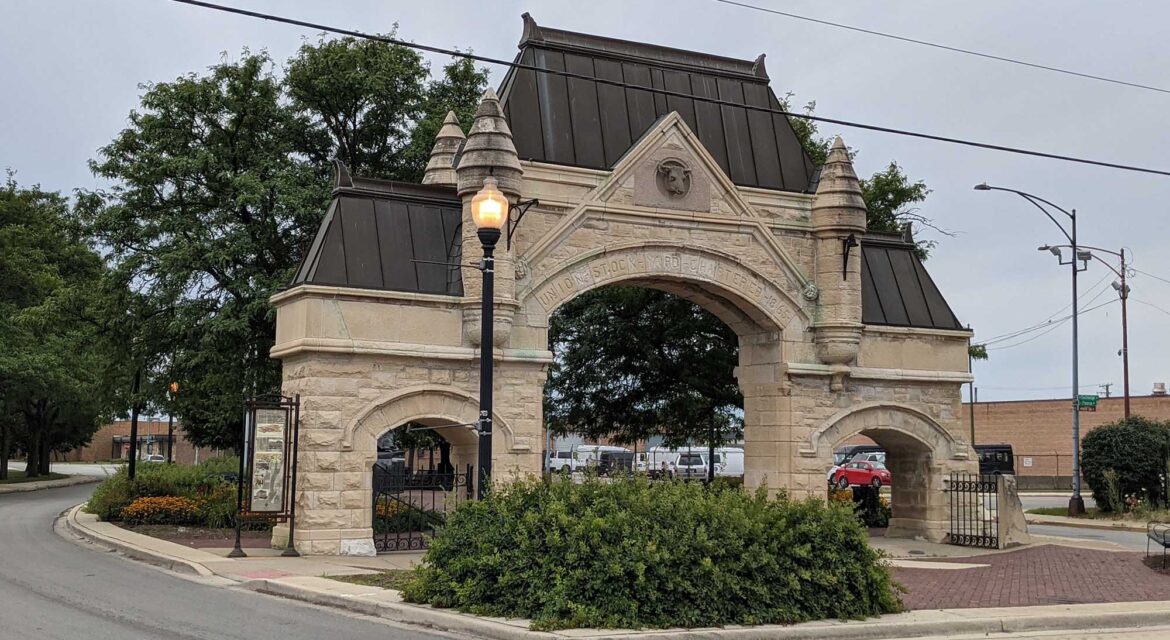 Located on the South Side of Chicago, Illinois, the Union Stock Yard Gate is a literal piece of history that connects the past of the city to the present Bridgeport neighborhood. The result of an effort to preserve and celebrate the only significant structural element from Chicago’s dominance in the meat packing industry, the landmark has been able to positively impact the neighborhood while attracting interest from both residents and visitors.
Located on the South Side of Chicago, Illinois, the Union Stock Yard Gate is a literal piece of history that connects the past of the city to the present Bridgeport neighborhood. The result of an effort to preserve and celebrate the only significant structural element from Chicago’s dominance in the meat packing industry, the landmark has been able to positively impact the neighborhood while attracting interest from both residents and visitors.

From Gate to Historic Landmark
 Established in 1865, Chicago’s Union Stock Yard was the world’s largest livestock trading and meat processing center when it opened. Designed to centralize the city’s growing meatpacking industry, the success of the stockyards was both instant and astronomical. That success was directly connected to the creation of the limestone Stock Yard Gate that was built in 1879. It features a relief of Sherman, the steer that won the American Fat Stock show in 1878, above the central arch.
Established in 1865, Chicago’s Union Stock Yard was the world’s largest livestock trading and meat processing center when it opened. Designed to centralize the city’s growing meatpacking industry, the success of the stockyards was both instant and astronomical. That success was directly connected to the creation of the limestone Stock Yard Gate that was built in 1879. It features a relief of Sherman, the steer that won the American Fat Stock show in 1878, above the central arch.
Chicago’s Union Stock Yard operated for over 105 years with the peak years between 1918 and 1924. A sweeping fire in 1934 sped up the demise, although it wouldn’t be until 1971 that all operations ceased. It was at this time that the stockyards were cleared for redevelopment, although the distinctive central gate was saved.
Becoming an official Chicago landmark in 1972 as well as a National Historic Landmark in 1981 enabled the Union Stock Yard Gate to become a key element of the Bridgeport community that would eventually take shape around it. Markers that celebrate the history it represents are located around the area, further highlighting the connection it has to specific individuals as well as to a formative era of the city’s history.
The effort to preserve and showcase this essential element of Chicago has allowed the Gate to become an important part of the wider Bridgeport neighborhood. Doing so highlights how such monuments can bridge the past and present to cultivate opportunities that benefit stakeholders and entire communities.

A Defining Feature of Chicago
 The demolition of Chicago’s Union Stock Yard could have easily seen the complete eradication of every single element associated with it, making connections to this era that much more difficult. Instead, the effort to both save and preserve the Union Stock Yard Gate not only allowed this history to be celebrated but has also enabled it to become a recognizable element of Bridgeport as well as the defining feature of Stockyards Industrial Park.
The demolition of Chicago’s Union Stock Yard could have easily seen the complete eradication of every single element associated with it, making connections to this era that much more difficult. Instead, the effort to both save and preserve the Union Stock Yard Gate not only allowed this history to be celebrated but has also enabled it to become a recognizable element of Bridgeport as well as the defining feature of Stockyards Industrial Park.
These developments highlight the kind of opportunities that can arise from monuments that are connected to multiple communities and eras.

